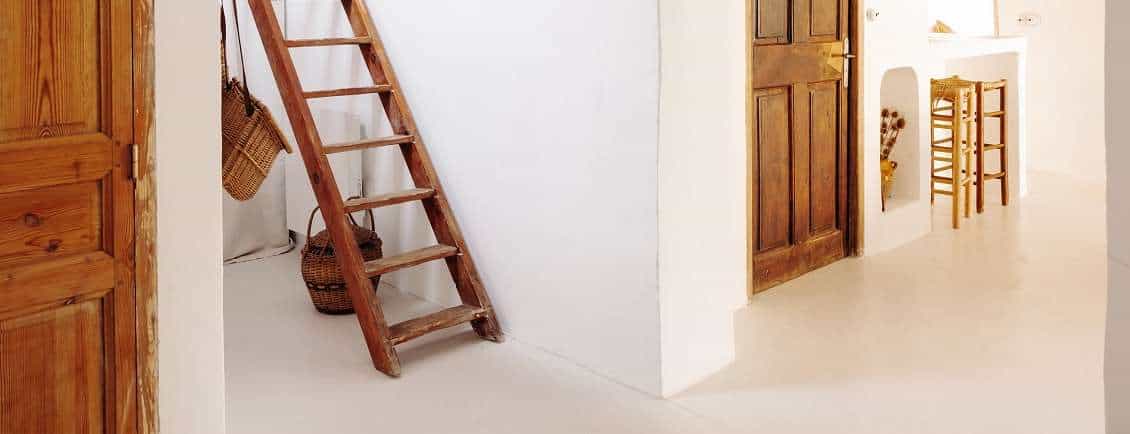Micro concrete, smoothed concrete, polished concrete, poured concrete, floated concrete, brushed concrete, deactivated concrete: what are the differences?
Between all the adjectives that can be associated with concrete – waxed, smoothed, polished, poured, floated, spatulated – it’s difficult for the general public to make sense of it all, and the truth is, even some professionals sometimes get things mixed up.
Here’s an article to help you make sense of it all.
What is concrete?
The building material known as concrete is a mixture of cement, sand and water.
Additives are often added to this base to enrich the material’s properties:
- pigments for coloring
- quartz or silica on the surface to make it non-slip
- resin to make it more resistant
- etc
Waxed concrete
The name micro concrete covers a wide range of decorative concretes, most of which are not waxed, but varnished.
Absurd, you may ask?
But there’s a logic to it, and it’s based on history: originally, the Marius Aurenti company marketed the first forms of micro concrete, the wax used to protect concrete against various types of aggression.
The original waxed concrete became popular, and was the darling of interior design magazines. It was gradually replaced by varnished or surface-treated concrete, and in a number of cases, mixed with resin in the mass – in other words, varnished resin concrete.
In addition, what is now known as micro concrete is more often than not a coating just a few millimetres thick, also known as millimetre concrete.
However, it is still possible to produce truly waxed concrete, using carnauba wax, for example.
Smooth concrete
Smoothed concrete is decorative concrete whose surface has been smoothed and compacted by hand or helicopter troweling.
Smoothing is carried out on fresh concrete a few hours after laying.
Polished concrete
Polished concrete is synonymous with smooth concrete.
Trowelled concrete
Trowelled concrete is concrete compacted and smoothed with a float, a flat tool with rounded edges, or with a helicopter, a mechanical float rotating at high speed.
Spatulated concrete
Spatulated concrete is decorative concrete applied by hand, using a spatula.
With this tool, the craftsman creates a beautiful textured effect, which also makes the floor non-slip.
Mineral concrete
Cast concrete
Poured concrete is a liquid, self-levelling mortar that is poured onto the floor to a thickness of just a few millimetres.
It is difficult to install, as it requires a single pour.
Once dry, it is protected with a coat of varnish or wax.
Brushed concrete
Brushed concrete is concrete that has been textured while still fresh, using a broom, brush, rake or specialized machine.
As it dries, it retains its striated texture, making it ideal for outdoor use, as it is less prone to slipping in rain or frost.
Deactivated concrete
Deactivated concrete is concrete to which an acid deactivator has been applied, eroding part of the material and then removed by high-pressure washing or brushing, leaving a grainy surface.
It is used in particular on floors that are likely to be frequently damp, to make them slip-resistant.


